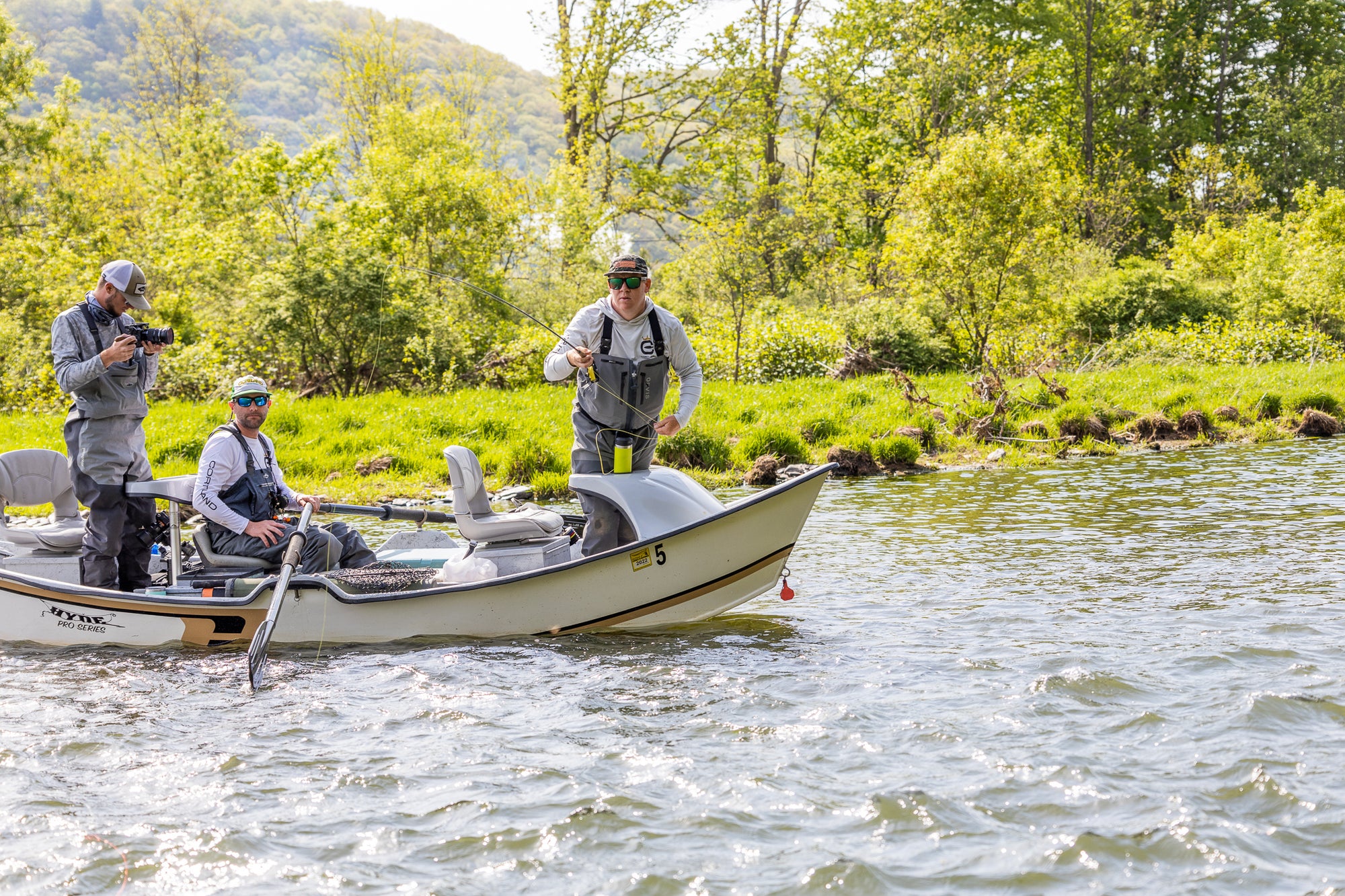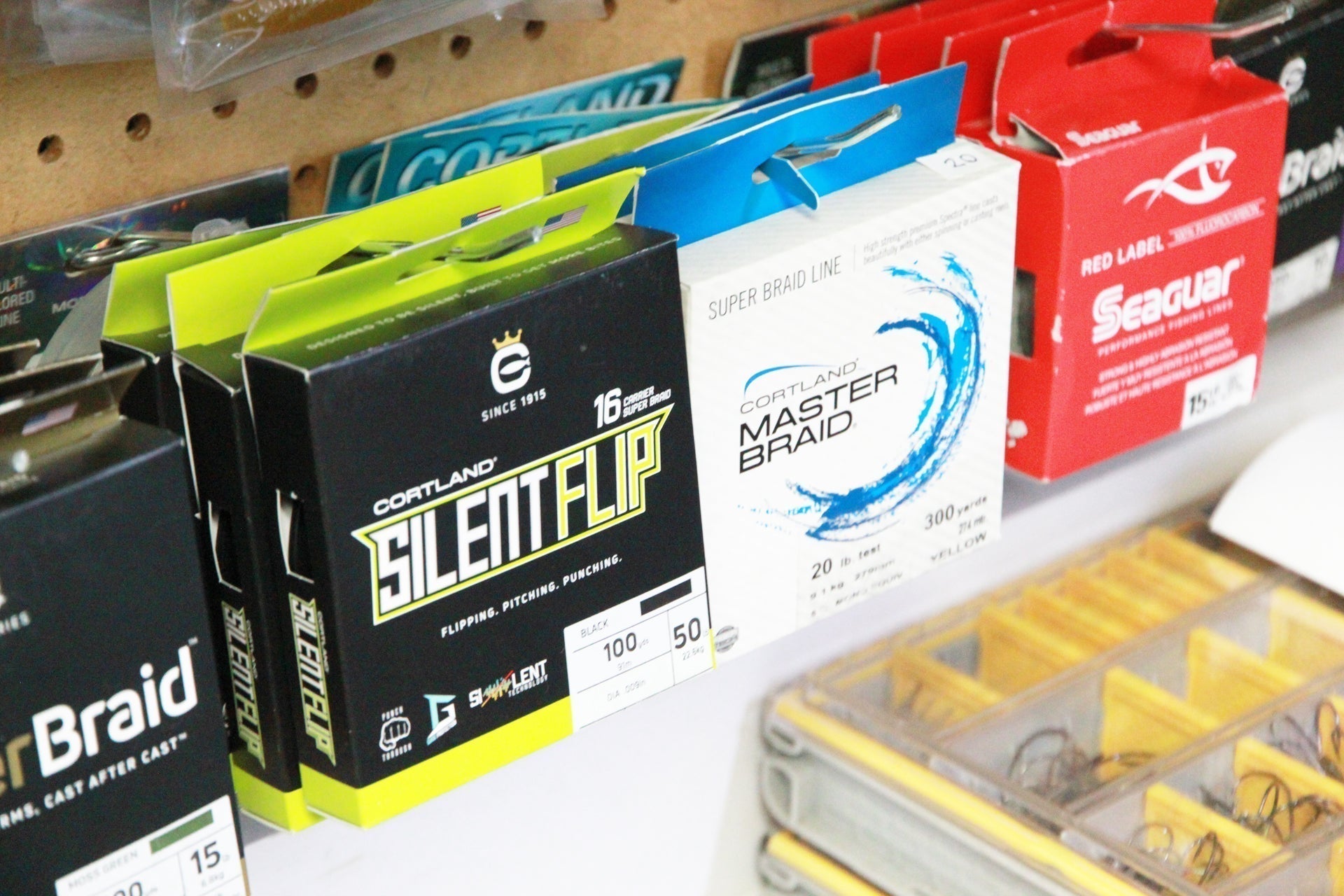Article Written by Brooks Robinson. Learn More About the author below / Article Read Time: 6 Minutes
For those of us that work at Cortland Line, we consider ourselves spoiled being less than one hour from the world-famous Upper Delaware River, one of the most prolific dry fly fisheries in the country. Today, I'm sharing a technique that someone passed down to me when I first started to become a serious trout angler. Using fluorocarbon tippet for dry flies is not uncommon but for those of you who aren’t aware of this tactic, or are skeptical of it, I hope this encourages you to give it a try.

I refer to the Upper Delaware River in this blog because it is one of the most difficult dry fly fisheries I’ve ever encountered, but everything I’ll cover can apply to any body of water where dry fly fishing for trout exists. Anyone who is a dry fly enthusiast and is not familiar with this fishery should set aside some time to come visit and challenge yourself. An old timer once told me, “If you can catch an adult fish with a dry fly on the Upper Delaware you can catch one anywhere". While I find there is quite a bit of truth to that statement I know once I switched to using fluorocarbon tippet for dry fly fishing my hookup ratio increased, but more importantly, my break-offs decreased.

The Upper Delaware trout fishery is located on the western edge of the Catskill Mountains in Southern New York, and roughly a two-hour drive (pending traffic!) from New York City. The Upper Delaware is a premier destination for trout anglers around the world and became famous once the bottom release dams were created to fill the Pepacton and Cannonsville reservoirs, which supply New York City with clean fresh water. Prior to the east branch, west branch, and main stem of the Upper Delaware becoming popular, the Catskill trout fisheries most historically noted are the Beaverkill River and Willowemoc Creek. Some of the most famous anglers in fly fishing history went there to experience the incredible trout fishing on a yearly basis and created fly patterns to fool these wary trout, some of which are still used today. Although the Upper Delaware overshadows the Beaverkill and Willowemoc in terms of their popularity, they are all one big river system and share the same PHD level dry fly-eating trout.

From time to time, I hear the misconception that fluorocarbon tippet cannot be used for dry fly fishing because of its inability to float. While fluorocarbon is denser than nylon tippet, and predominantly used for sub-surface techniques, the ultra-thin diameter of sizes 4x-8x matched with water tension allows the material to float. This is especially true when paired with a nylon tapered leader. I prefer the Cortland Ultra-Premium Fluorocarbon Tippet because of its super-clear, abrasion-resistant, and strong knot strength properties. Even though a good quality nylon tippet will work for dry fly fishing, I prefer fishing the best option when targeting extremely smart, large, and pressured fish. Typically, fluorocarbon does not have as much elongation (stretch) to failure compared to nylon, however, the Cortland Ultra-Premium Fluorocarbon Tippet is the most forgiving tippet in its class. In addition to a superior stretch-to-failure ratio, the UPFT is by far the most supple fluorocarbon I’ve used, which is extremely important when targeting fish in slicked-out pools. By having a tippet that flexes with tiny micro-currents, it creates far less hydraulics near your presentation that smart fish are known to avoid.

I pair the fluorocarbon tippet with a nylon tapered leader ranging from 9ft -15ft in length, depending on the water clarity, wind, and fly size. Typically, I'll run a longer tapered leader on low, clear water days and when the flies I'm imitating are very small, for example, BWO, Sulfurs, and Midges. If I'm fishing in higher, off-colored water, in heavier wind, and large fly patterns I'll typically go to a shorter tapered leader to help turn the fly over when presenting a cast. Adding the proper length of fluorocarbon tippet off the nylon tapered leader is the most important part of this setup. Too long of a tippet section and the fly won't turn over, too little of a tippet section and the fly will land aggressively. A nylon tapered leader usually consists of about 1.5-4 feet of a nylon tippet section depending on the overall length. For example, the shorter the leader, (7.5ft - 9ft) the shorter the tippet section is going to be compared to a longer nylon tapered leader (12ft - 15ft). The best way to fish with a fluorocarbon tippet with a nylon tapered leader is to trim back the tippet section of the tapered leader and replace it with the fluorocarbon tippet. This allows the leader to turn over properly as it was intended to, but now features all those sought-after properties of a premium Fluorocarbon Tippet.

While there is a time and place for nylon tippet, I find the benefits of the Ultra-Premium Fluorocarbon are far superior, and it’s much easier not having to carry both options during a long day on the water. Thankfully the first outing I switched to using fluorocarbon from nylon, I just so happened to be successful. I encourage you to stay with this transition if you aren’t successful your first time switching over. There are still days I get outsmarted by adult trout, but I assure you I’m overall more successful because of this changeover.
For more information on fishing the Upper Delaware please reach out to our local Cortland Line dealers and outfitters:
Dette Flies - Website & InstagramTroutfitter Fly Shop and Inn - Website & Instagram
West Branch Angler - Website & Instagram

About the Author
Brooks Robinson was born in Cortland, NY, and grew up on a small lake just 10 minutes north of the Cortland Line Office. He started working at Cortland Line 10 years ago in fly line production. Currently, he is part of the product development team and an inside sales rep covering Maine to Maryland for both conventional and fly fishing products. In his free time, you can find him fishing the Upper Delaware for trout or fishing saltwater for tuna and striped bass. Brooks currently resides in Syracuse, NY with his wife Rianne and two girls who love to fish and spend time outdoors.
Products Mentioned in this Article:
Ultra Premium Fluorocarbon TippetNylon Tapered Leaders - 7.5 ft-12 ft
Nylon Tapered Leaders - 15 ft


